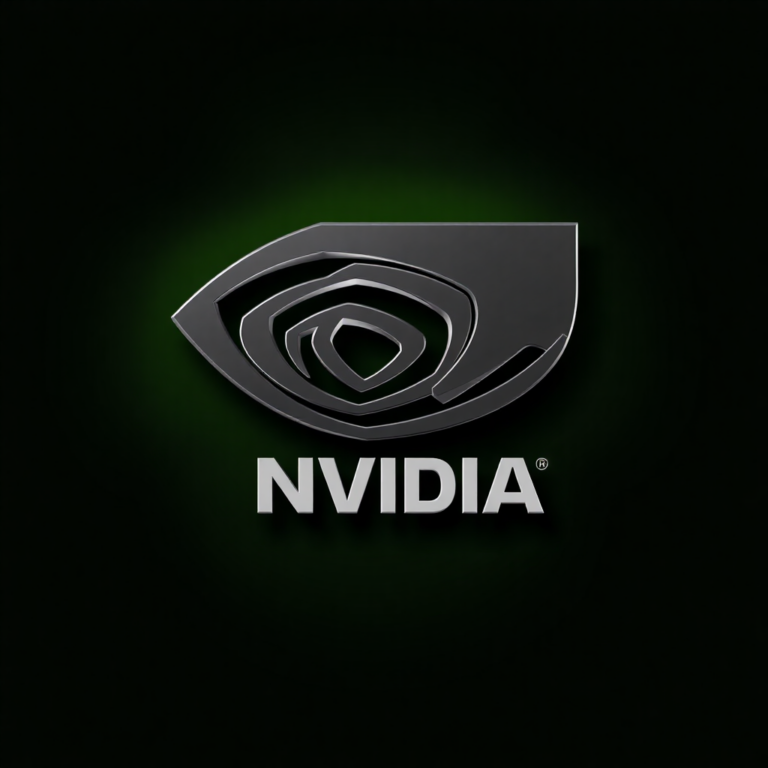Nvidia, known globally for its cutting-edge AI chips and graphics processors, has recently experienced a notable decline in its stock value. This drop followed concerns that its newly introduced AI chip, tailored for the Chinese market, may not be enough to counteract the effects of U.S. export restrictions and rising domestic competition in China.
Despite Nvidia’s rapid ascent during the AI boom, mounting geopolitical tensions have cast a shadow over its future in one of its most significant international markets—China. With export limitations tightening and China investing in homegrown chip alternatives, investors have responded with caution.
This article explores why Nvidia’s latest AI chip, the H20, may not resolve its China challenges, and how evolving regulatory, political, and market dynamics are reshaping the company’s global strategy.
Nvidia’s Meteoric Rise and Market Dominance
In the last few years, Nvidia has emerged as a pivotal player in the artificial intelligence revolution. Its GPUs power generative AI models, high-performance computing, and cloud-based services used by leading tech firms like Google, Microsoft, Amazon, and Meta.
Between 2023 and 2024, Nvidia’s market capitalization surged past $2 trillion, driven largely by demand for its H100 and A100 chips. These processors are essential for training large AI models, giving Nvidia an estimated 80% share in the AI accelerator market.
However, a sizable chunk of Nvidia’s revenue had been derived from Chinese tech giants like Tencent, Baidu, and Alibaba. That stream is now under serious threat due to increasingly aggressive U.S. export policies.
Why China Matters to Nvidia
China has long been one of Nvidia’s largest international customers, particularly in the data center and AI development sectors. As Chinese companies raced to build advanced generative AI platforms, Nvidia’s chips became critical infrastructure.
Nevertheless, the geopolitical climate has shifted dramatically. The U.S. government views advanced AI chips as a matter of national security and has responded by restricting exports of high-end processors to China.
Export Controls: The Core of the Crisis
Understanding the Restrictions
Since 2022, the U.S. Department of Commerce has been steadily tightening export rules on advanced semiconductors. These regulations aim to prevent adversarial nations, particularly China, from acquiring hardware that could enhance military capabilities or surveillance systems.
These rules specifically target high-performance chips based on key metrics like computing power and data transfer rates. Consequently, Nvidia’s most advanced AI chips—the A100, H100, and L40S—have been effectively banned from being exported to China.
Nvidia’s Workaround Strategy
In response, Nvidia introduced downgraded versions of its AI chips, such as the H20, L20, and L2. These chips were designed to meet the U.S. export thresholds while still serving the needs of Chinese customers.
The H20 was expected to replace banned models by offering acceptable levels of AI performance. However, delays in approval, lukewarm reception, and policy uncertainties have prevented the chip from gaining traction.
Why the H20 Chip Is Not the Solution
1. Lack of Regulatory Clarity
Despite Nvidia’s efforts to comply, there is no guarantee that the H20 chip will consistently meet U.S. export requirements. Regulators retain the authority to reject licenses even for compliant products. This uncertainty has discouraged Chinese customers from committing to long-term contracts.
2. Performance Limitations
The H20 is a scaled-down chip that underperforms compared to the H100 and A100. For companies seeking to train large language models or run data-intensive AI systems, the chip’s limitations make it less attractive.
Chinese firms building tools similar to OpenAI’s GPT-4 or Google’s Gemini require substantial computational power—something the H20 cannot deliver efficiently.
3. Chinese Tech Firms Are Moving On
With the risk of future restrictions looming, Chinese companies have been accelerating investments in local alternatives. Domestic chipmakers like Huawei and Biren Technology are developing competitive AI processors.
Huawei’s Ascend 910B, launched in late 2023, has been touted as a potential replacement for foreign AI chips. While it may not match Nvidia’s top-tier models yet, it is proving sufficient for many enterprise applications within China.
Stock Market Reactions
Nvidia’s Recent Performance
On May 9, 2025, Nvidia’s stock dropped nearly 2% during intraday trading following reports that Chinese authorities had not approved widespread use of the H20 chip. This signaled continued obstacles in the Chinese market, leading to negative investor sentiment.
Despite strong revenue from North American and European markets, analysts have revised growth expectations downward due to weakening Chinese demand.
Wall Street’s New Forecasts
Goldman Sachs and Morgan Stanley have both reduced their revenue projections for Nvidia’s China segment. Once expected to account for up to 20% of the company’s data center income, China may now contribute less than 10%.
With geopolitical risks unlikely to fade soon, market watchers are urging caution regarding Nvidia’s medium-term outlook.
The Competitive Landscape
AMD and Intel Face Similar Barriers
Nvidia’s competitors are not exempt from the same restrictions. AMD, Intel, and even smaller fabless chipmakers have found themselves navigating similar export limitations. However, Nvidia stands out because of its larger dependency on China for AI-related revenues.
Rise of Chinese Chipmakers
Companies like Huawei, Cambricon, and Biren are rapidly advancing. These companies benefit from generous government support, as China prioritizes tech independence.
Over the next few years, China’s AI industry may shift heavily toward these domestic players, decreasing dependency on Western suppliers like Nvidia.
Broader Implications for AI and Innovation
Stalling of AI Progress in China
Restricted access to high-end GPUs may slow down AI development in China. Training advanced models requires immense computing power, and current domestic alternatives are still catching up.
However, this gap may not last long. As Chinese firms increase investment and talent retention, the country is likely to close the technological divide within a few years.
Supply Chain and Global Shifts
Nvidia is now actively seeking to diversify its supply and demand networks. Countries like India, Vietnam, and Indonesia are emerging as alternatives for production and sales. These markets may not offer China’s scale, but they represent growing demand for AI technologies.
Nvidia’s Response Strategy
Pivoting Beyond China
In response to shrinking opportunities in China, Nvidia is broadening its focus to more politically stable regions. In Europe, several AI infrastructure projects are being developed in collaboration with Nvidia. In India, government-backed AI centers have shown interest in using Nvidia’s enterprise software stack and edge computing solutions.
AI Enterprise Suite Expansion
Nvidia’s push toward software is another strategic shift. By expanding the Nvidia AI Enterprise ecosystem, the company hopes to generate recurring revenue from AI software licenses, regardless of hardware restrictions.
These software tools help enterprises deploy, manage, and scale AI models in diverse environments—including cloud services that are not hardware-specific.
Lobbying and Industry Advocacy
Behind the scenes, Nvidia and other semiconductor leaders have increased lobbying efforts in Washington. Their goal is to establish clear, consistent export rules that enable global business without compromising national security.
Trade groups, including the Semiconductor Industry Association (SIA), have also advocated for nuanced policies that distinguish between civilian and military use cases.
Investment Perspective: Should You Be Worried?
Strengths Remain, But Risks Are Clear
Nvidia continues to lead in innovation and product development. With upcoming launches like the Blackwell GPU architecture, the company is set to push performance boundaries even further.
However, regulatory risks and regional instability must be considered. For now, Nvidia remains a strong long-term investment, but not without short-term volatility.
Tips for Investors:
-
Monitor regulatory developments affecting U.S.-China trade.
-
Diversify investments in AI and semiconductor stocks.
-
Evaluate Nvidia’s growth outside China, including India and Europe.
-
Track innovation such as Blackwell architecture and AI software growth.
Nvidia’s stock drop serves as a clear reminder that technological innovation is not insulated from geopolitics. While the new H20 chip was introduced as a compliant solution to U.S. export rules, it has done little to resolve the larger strategic dilemma Nvidia faces in China.
As domestic Chinese chipmakers rise and Western companies reevaluate their exposure, Nvidia must pivot aggressively to maintain growth. Its future lies in balancing cutting-edge innovation with careful navigation of global policy.
For now, the company remains a titan in AI—but its road forward will be shaped as much by diplomats and regulators as it will be by engineers and inventors.
Feel free to check out our other website at :aibrainpowered.com











